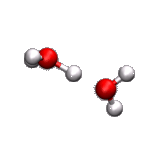
Water chemistry is fundamental to Life processes on Earth and acid-base chemistry is one of the most common chemical processes in nature. Elucidating the microscopic mechanism of acid-base reactions in water is one of the most enduring questions in chemistry and biology which has continued to puzzle experts and laymen alike. Pines Lab has made remarkable progress in this continuously demanding and highly competitive research field with a bottom-up strategy while adopting an attitude of a long-distance runner: the fundamentals of proton solvation and proton transfer from a mechanistic point of view were studied using novel experimental techniques, each time incrementally increasing our understanding of these very complex and convoluted processes.
1. We explore several fundamental questions concerning the exceptional role of hydrogen bonds in determining acid-base reactivity in chemical and biological environments. We also explore the unique acid-base properties of cationic acids RNH3+ which are very important in biological systems. In collaboration with Prof. J. T. Hynes, Department of Chemistry and Biochemistry , University of Colorado at Boulder and with Prof. Victor Batista, Department of Chemistry, Yale University (BSF, 2007-2011, Solute-solvent interactions and proton transfer reactions of physiologically protonatable groups in aqueous solutions and their biochemical significance).
2. We further explore the highly rewarding concept that we have recently developed of proton transfer via 'solvent switches' within pre-prepared hydrogen bonding complexes of photoacids in aqueous solutions in collaboration with Dr. Erik T. J. Nibbering, Max Born Institut fuer Nichtlineare Optik und Kurzzeitspektroskopie, GIF 2007-2010, Optical and mid-IR investigations of excited-state proton transfer).

3. Carbonic-acid chemistry in aqueous environments: A missing factor in assessing the effect of ocean acidification on marine ecosystems in high-CO2 world. The acidity of the oceans is gradually increasing due to the increase in the atmospheric concentration of CO2 as a result of human activities. There is no doubt about the reality of this phenomenon or the reliability of the recent observation of about 30% increase in the average surface acidity of the oceans during the past century. However, little is known about the long-time effect of increased ocean acidity on marine ecosystems. Noticeably absent from oceanic pH scales is carbonic acid, (H2CO3) which until very recently was considered too unstable in water solutions to be directly involved in any effective acid-base chemistry. There is now compelling theoretical and experimental evidence that aqueous H2CO3 is stable at least on the ns scale. We have recently demonstrated by ultrafast laser spectroscopy that H2CO3 may be generated within a few hundreds of ps by the rapid protonation of HCO3- ions and that it has remained completely stable during our time-window of observation which was about 1 ns. We are now in a position to state that the acid-base chemistry of carbonic acid should not be ignored in conditions prevailing in surface waters of the world oceans and seas (in collaboration with Dr. Erik T. J. Nibbering in Max Born Institut)
